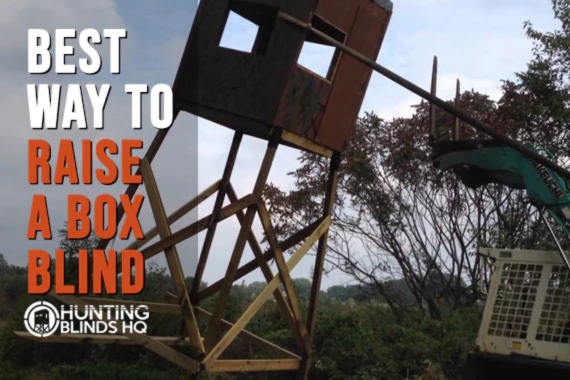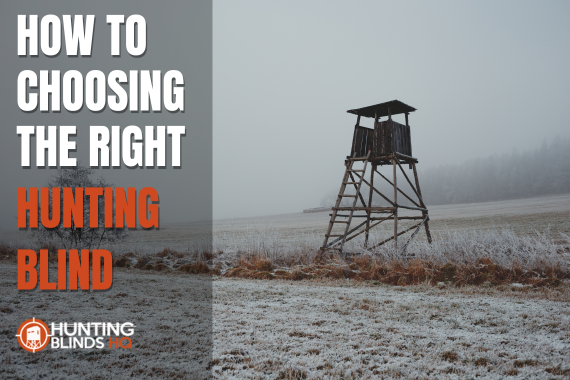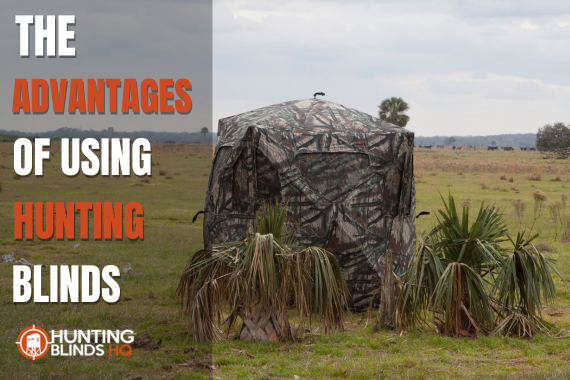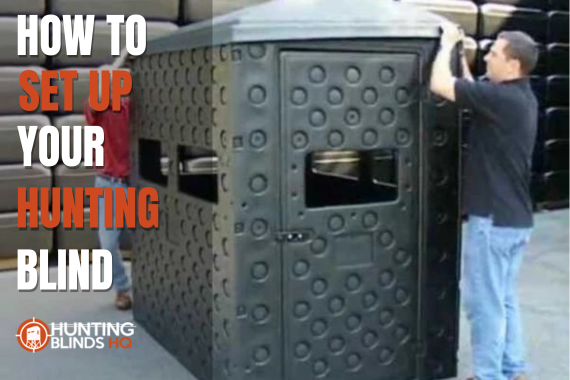
Having the knowledge of how and where to set up your box blind is one of the important factors that determine how successful your hunt will be. Ideally, set it up at least two weeks ahead to help the deer get comfortable with it. They must get used to your box blind being on their turf.
You can hunt in a box blind in two different ways:
- There's an elevated type mounted a few feet up from the ground that you can access with a ladder. Elevated box blinds have their own advantages. They offer a great way to study your target from afar. Most hunters have had more success with shots in an elevated position. If you want to raise one of your own and incorporate this into your hunting strategy, let us help you.
- The other type is the ground-level blind that sits on a platform a few inches off the ground. Ground-level blinds have their perks, such as being easier to set up and transport, and overall being really flexible. You can set one up and move it in just a few minutes.
Choosing the Right Box Blind
Choosing the right blind depends on what you're using it for. Is it shooting your first whitetail during the general rifle season? Is it to feel the excitement as a buck chases a doe out with his nose on the ground? Sportsman's Condo and Mavericks offers great elevated hunting blinds that are easy and quick to set up and have room for you, your chair, your pack, and your rifle.
For bow hunting, you need a blind with plenty of room, without any problem withdrawing. Go ahead and check out these Banks Outdoors elevated hunting blinds.
Finding the Ideal Spot
Make sure you have your hunting blind out of sight of the animals when choosing a spot, and you have to check the direction of the wind. Place the blind so it forces wildlife to cross it instead of facing it directly when they enter the area. This will genuinely help you with concealment and keep the wildlife away from discovering you.
Set up the box blind and organize everything so you know where everything goes. Scatter all your pieces and ensure you have all the parts to assemble the blind. To speed up, pre-sort all bolts, nuts, and washers. Additionally, you should think about how you'll shoot out of it, which direction to turn it, and where you want the ladder or how to access it. It's much easier to build it in your desired direction rather than turn it around later.
The Art of Being Elevated
There are actually two ways you can raise your box blind. Ensure you have your ratchet strap, anchoring cable, and 3-4 friends ready to help you. You must check the best height for your stand or how far you should put it in the air. You need to be above the deer's line of sight, where they can't see you, and high enough where you think the wind will be dispersed better. For bow hunting, 10 ft. is actually recommended because too high means too acute.
Tractor or Skid Loader
One way to raise a box blind is with the help of a skid loader or tractor. Once your box blind is assembled, you can follow these instructions (this can be done with 10 ft. or 15 ft. stands):
- Position the cardboard on the floor to protect the handrails of the box blind.
- Roll the box blind onto the handrails over the cardboard.
- Install the anchoring cable to the stand. Use a 1" or 2" ratchet strap to secure the legs of the stand resting on the ground to the 1" rebar pin so the stand does not slide.
- Secure one end of the strap to the eye hook on the bottom base. Secure to the tractor or skid loader.
- Place the strap overall the bracing and pull slowly until the box blind is raised.
Winch
Do you have a winch on your truck? Well, it's because this is another way of raising a box blind. You can get a long piece of rope and build a very big A-frame (at least 16' tall) out of some small trees or 2x6 Ts (nailed and tied together about 12" from the top). Dig a couple of good-sized holes and drop the legs of your frame in there. The A-frame will need to be upright but leaning towards the stand. The rope should go over the top of the A-frame and be attached to the top of the stand. Allow a safe distance and winch the box blind up. Don't forget to build (or take) a ladder or steps to get to the door once you raise it.
The essence of being elevated is that you can see much better and watch the deer approach. When you're up there, it keeps your scent higher and disperses it better, making you less likely to get noticed.
Hunters may only have an opportunity to hunt once or twice a year, but if the location of the box blind is good, you can hope to make big bucks or maybe somebody's first doe. Call or chat with us now so we can assist you in choosing and raising the best elevated hunting blinds and stand for you. Don't miss out on what we've got coming up for you!





















